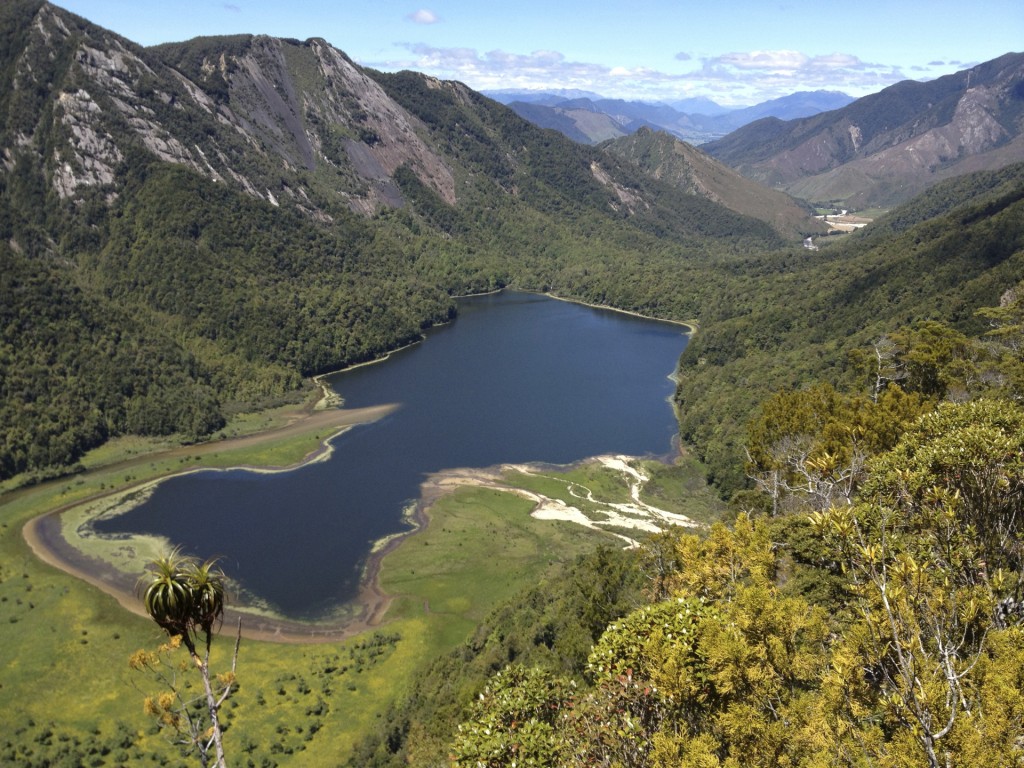Planning a tramp here, and then find that there is a threat. I hate that!

DOC’s hydro approval damns bats | Stuff.co.nz: “DOC’s hydro approval damns bats
HELEN MURDOCH
Last updated 13:00 26/05/2011
The Conservation Department is under fire from conservationists for approving a hydro scheme at the entrance to the Lake Matiri wildlife refuge.
It was another nail in the coffin for New Zealand’s critically endangered long-tailed bats and long-finned eels, Forest and Bird said, and would not see any net conservation gain for the lake and its wildlife and failed to recognise the importance of the lake as the southern entrance to Kahurangi National Park.
DOC yesterday approved a concession to New Zealand Energy Limited to build parts of the hydro electric scheme on conservation estate. The project had already got resource consent approval from the Tasman District Council, and required DOC approval for work on the public estate. This included three weirs at lake outlets into the Matiri River, part of the penstock and an access track.
The weirs would divert up to 6.3 cubic metres of water a second into a 2.2-kilometre pipe to a powerhouse, from where it would be returned to the river. Part of the scheme’s infrastructure would lie on adjoining New Zealand Energy-owned land.
Forest and Bird top of the south field officer Debs Martin said the go-ahead would see tall trees, favoured by roosting bats, removed and their feeding area over the still lake water disturbed.
The scheme would see the lake’s level fluctuate and the weirs would hamper the natural migration, between the lake and the river, of long-finned eels.
Lake Matiri is a wildlife refuge and part of the Buller catchment water conservation order.
‘The project would be the first ever dam on this wild and intact river system,’ Ms Martin said. ‘It is a completely inappropriate place for a hydro scheme. Forest and Bird is concerned the Minister of Conservation has failed to recognise the importance of this southern entrance to Kahurangi National Park.
‘The concession provides for a small financial mitigation package – none of which is targeted towards protecting the bats.
‘The decision is in contradiction to the legislation as it does not constitute any net conservation gain to the lake and its wildlife.’
Bat expert Dr Brian Lloyd of Upper Moutere said New Zealand’s long-tailed bats were on a trajectory to extinction and the timescale was short. ‘Every little bit we chip away carries them to extinction sooner.’
Removal of tall red beech trees would reduce the options for roosting bats to escape predators, he said. Disturbing the lake’s insect life would remove what was possibly the bat’s main source of food.
The lake’s bat population was significant and the last between Murchison and St Arnaud, Mr Lloyd said.
DOC Nelson Marlborough acting community relations manager Rod Witte said the department’s expert had inspected the construction route and concluded there was no reason to believe the proposed work would adversely affect the bat population.
The company was required to check that no bats were roosting in trees to be felled by monitoring with an automated bat detector for 24 hours prior to felling. Of the 51 mature trees authorised to be removed, four might have cavities suitable for bat roosting but none had been conclusively shown to be a bat roost.
A significant gain in the concession had been securing legal public walking and biking access across the company’s land, Mr Witte said. New Zealand Energy is to put $30,000 towards a footbridge over the West Branch Matiri River or another recreational project, $30,000 to enhance aquatic habitat in the wider Buller River catchment and $20,000 to enhance terrestrial habitat in the immediate catchment.
– © Fairfax NZ News”
